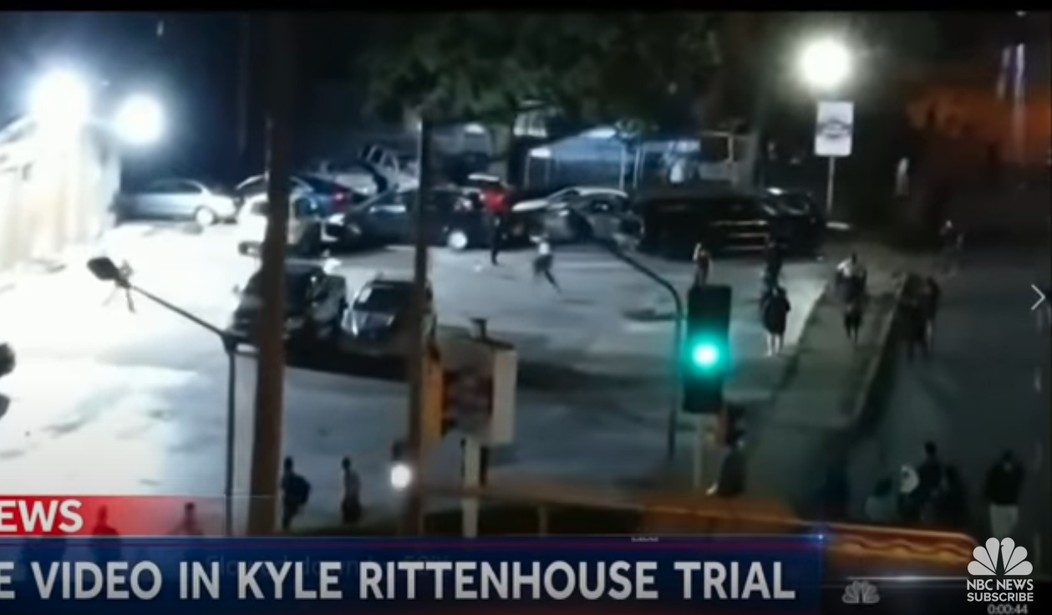Prosecutors in the Rittenhouse trial effectively withheld evidence from the defense by giving them a highly compressed version of the famous drone video.
Exactly how that’s withholding I’ll explain in a moment.
Here’s the NBC News report on the drone video.
WOW — Rittenhouse attorneys have the goods on prosecution having withheld evidence. Pros. sent a compressed version of the drone video to defense, when they had the full resolution which they held until closing. 3.6 MB v. 11.5 MB. Huge difference.
— shipwreckedcrew.substack.com (@shipwreckedcrew) November 17, 2021
“Shipwrecked” added that prosecutors “prevented the defense from making use of the video during the case because evidence was closed prior to the defense being told about 11.5 MB version.”
Maybe you’re wondering, “OK, so one file was three times bigger than the other, but who cares about file sizes?”
I’ll tell you: Everyone, including the Rittenhouse jurors, squinting at the defense’s overly-compressed version of that video, trying to figure out what they were looking at.
Video compression — I’m admittedly not a normal person — is a technology near and dear to my heart.
I’m a movie collector, but rather than have shelf after shelf stacked with DVDs and Blu-Rays, I “rip” each disc into a compressed digital version that I store on a Drobo hard drive array for home streaming via a Plex server and Apple TV hardware.
(This is perfectly legal, so long as you own the original discs. I do. They’re safely tucked away in the basement.)
Instead of getting deep into the technical woods with talk about various compression codecs or quality settings, let me show you a quick example from a movie you might have seen once or twice before.
It’s from a little flick called Star Wars that came out when I was a kid, and the quality of the Blu-Ray release is stellar.
So what I’ve done is produce a clip from my very own digital copy. I compressed the Blu-Ray with Handbrake using the advanced H265 codec in 10-bit color at a constant quality setting of 19. The result is a video the same size and quality as you’d expect to get from the iTunes Store, Netflix, or Amazon Prime.
Recommended: WHOA: Rittenhouse Prosecutor Thomas Binger Aims AR-15 at People in Courtroom, Finger on the Trigger
It’s basically indistinguishable from the Blu-Ray.
Here’s the first version, straight from my personal library.
To see just how good the video quality is (even after YouTube has re-compressed it!) watch it in full-screen.
(YouTube removed the music for copyright reasons.)
Here’s the exact same clip, compressed to 33% of its original size — just like prosecutors did to the Rittenhouse video. Again, watch the clip in full-screen to see how bad it looks.
The video is choppy, details are lost to smush and pixelation, and anything in the shadows is basically gone.
That’s what three-to-one compression does to a digitally-remastered big-budget Hollywood special effects spectacular. Imagine what it does to drone footage, shot in terrible lighting conditions, that was never very good, to begin with.
Actually, you don’t have to imagine. I’ve just shown you. And so did Rittenhouse’s sketchy (at best) prosecutors.
In video, information — or “evidence,” if you prefer — is shown in pixels.
High-quality compression removes the pixels you can’t see or notice, in order to achieve a reasonable file size. Low-quality compression removes pixels you can and want to see, in order to achieve a tiny file size. That’s nice when you’re trying to watch a video on your smartphone, but it’s damn near criminal to do it to evidence in a criminal trial.
Compression eliminates pixels. It limits what can be seen. It eliminates evidence.
If using three-to-one compression isn’t withholding evidence, then what is it?










